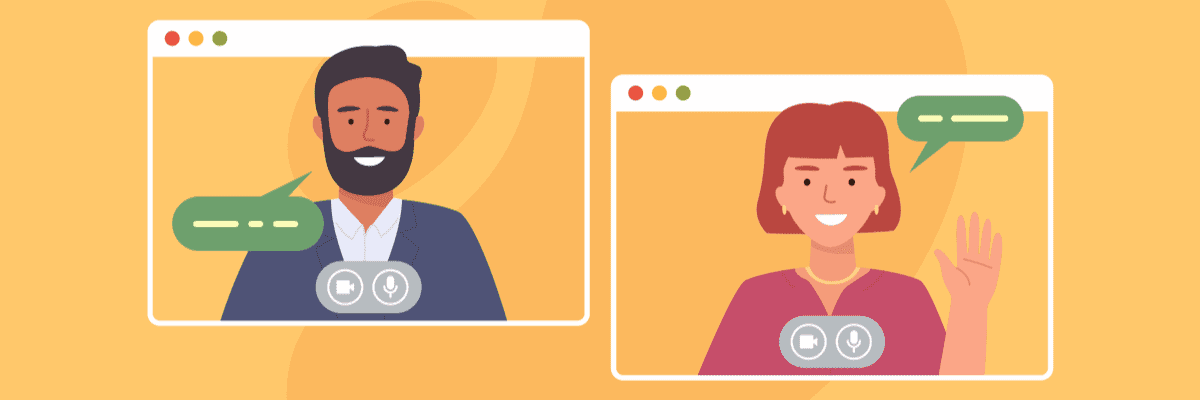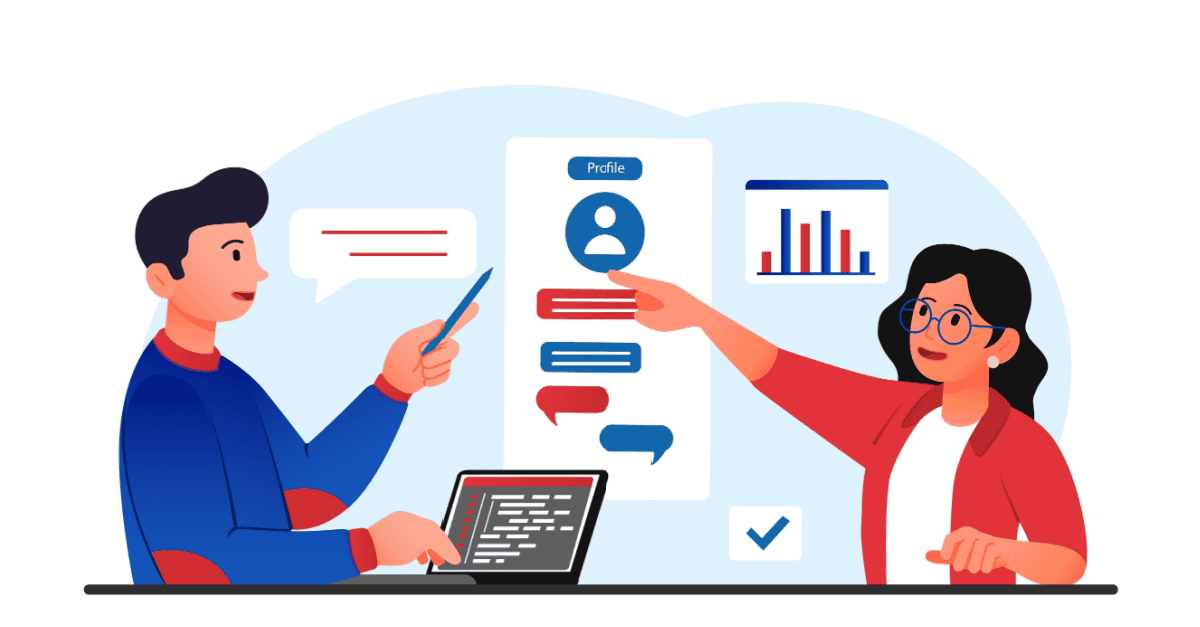
3 Ways to Invest in Your Virtual Customer Experience
Written By: Jason Eatmon
A Better Virtual Customer Experience Brings Better Results
In a world where everyone is connected, you need to differentiate. As your organization makes the shift from in-person to virtual selling, here are 3 ways you can invest in your virtual customer experience.
Well, it’s no longer a supposition— virtual selling is here to stay. While several studies support this, the data trend is clear: Virtual selling isn’t going anywhere. It’s here, and it’s steadfast. Whether virtual selling seems like an unwanted uncle overstaying their welcome, or a new friend to embrace, virtual selling is part of your new normal.
In-Person is Out, Virtual and Self-Service Take the Spotlight
A recent study by McKinsey & Company highlights some very compelling and astonishing trends which clearly indicate that decision-makers (globally and across industries) want the “big digital shift” to remain.
McKinsey’s data shows that 70 to 80 percent of B2B decision-makers prefer remote human (virtual) or digital self-service. I know what you might be thinking— “Not in my business” or “Not in my industry,” right? Not so fast. The same data also shows that 32% of buyers are willing to spend $50K-500K on virtual or self-service methods, and 27% are willing to spend $500K or more.
And if that’s not enough evidence, 76% of sales leaders are reporting that virtual selling is equal to or more effective than traditional methodologies. In fact, the results show that industries that have been historically face-to-face, such as pharmaceutical and medical sales, now trend significantly towards virtual engagements.
Virtual Isn’t Just a Phase
You might think that this is just a trend with COVID-19 and its associated lockdowns. However, the data doesn’t support that notion. In fact, the adoption of virtual and digital practices has continued to grow, even when lockdowns have lifted.
The traditional in-person meetings continue to drop, while video conferencing and online chat have emerged as the new defacto platforms for interacting with clients and customers. Video conferencing and online chat have a 69% and 31% increase in adoption, respectively.
Why Is Virtual Selling Sticking Around?
Even when lockdowns and travel restrictions are relaxed and people are starting to work at their offices again, why does the trend continue towards virtual? It’s simple, really. Safety is a big reason, clearly, but it’s also become easier for consumers to get information and self-serve.
Additionally, sales organizations predict that dramatically lower travel expenses subsequently reduce the cost of sale. Moreover, it has helped companies expand their reach and improve sales efficiencies. Smart companies are leveraging these technologies to stay more in touch with their clients, making them more loyal and “sticky.”
How Do You Make Virtual Selling Work For You?
So, now what? If “everyone” is doing it, how do you differentiate? How do you stand out when everyone was forced, and now chooses, to stay on this virtual stage? How can you be seen and heard in the virtual sea of sameness?
That’s an easy answer: You need to be better than everyone else. Organizations that will emerge victoriously will be those that have invested in three different areas: their people, their processes, and their tools.
They’re making these investments with the customer experience at the center of everything. In other words, they are making investments to guarantee a top-tier virtual customer experience. Remember, your buyer’s emotional experience while working with you is the most consistent predictor of outcome than any other variable.
3 Ways to Invest in Your Virtual Customer Experience
People
Virtual selling isn’t a pickup game. It’s not something you just “do.” You don’t take your in-person skills and just show up at the opposite end of the camera. That isn’t going to cut it. A well-prepared and well-practiced sales rookie will outsell even the most seasoned of sellers. Sure, you can wing it, and you may have already experienced some success. But what happens when your competition shows up to the game with a purpose-built studio set, good lighting, a professional background, and a well-polished presentation? You will get destroyed.
Organizations must invest in the training and resources for their members to provide the most excellent experience to their prospects and customers. It’s a whole new game, folks. Having a poor virtual environment (using your built-in webcam, goofy headphones, bad lighting, and a silly virtual background) is no different than showing up to an in-person meeting with dirty pants and a wrinkled shirt.
Tools
Good cameras, excellent microphones, purposeful lighting, and digital switchers are just some of the tools sellers need. Securing and conquering your virtual meeting platform is paramount. Anything that happens to affect the meeting quality will be seen as your fault, so it is essential that you establish unprecedented expertise in every facet of your virtual meeting platform. (And hey, don’t skimp on this. There are a lot of really, really bad platforms out there. They’re usually cheap, so be careful.)
You must also invest in and master social media platforms such as LinkedIn. Live chat is big, and organizations must get this implemented and executed in a relevant and meaningful way. Video messaging is another powerful, must-have tool that can and should be used throughout the entire sales journey. Uncomfortable with these things? Your competition isn’t.
Processes
To acknowledge that you need to adopt virtual processes is one thing. To actually make the switch is another thing entirely. Taking your pre-pandemic processes and adapting them to a new virtual and digital self-service world is fundamental to differentiation and survival. The way we prospect, conduct initial meetings, facilitate discovery, meet, present, and negotiate must all evolve.
I’ve seen traditional sales organizations migrate from in-person prospecting (plus five days a week of windshield time) to fully digital in just a few months. You can do it. It requires creativity, determination, diligence, and maybe even a little outside help. But most selling organizations have the ability to transform from traditional to virtual.
You feel like you’re ahead in the race because your competition has always been behind you. But be careful, because you just might get lapped.
Need help training your people, leveraging virtual processes, or selecting and implementing new tools? We wrote the book (literally) on Virtual Selling, and have decades of training and executive consulting experience. Sales Gravy has the expertise to take your virtual customer experience to the next level, faster than your competitors.
About the author
Get FREE Sales Training Delivered to Your Inbox
Join more than 360,000 professionals who get our weekly newsletter.
Related Articles

Learn Online
Self-paced courses from the
world's top sales experts

Virtual Training
Live, interactive instruction in small
groups with master trainers

Coaching
One-to-one personalized coaching
focused on your unique situation






